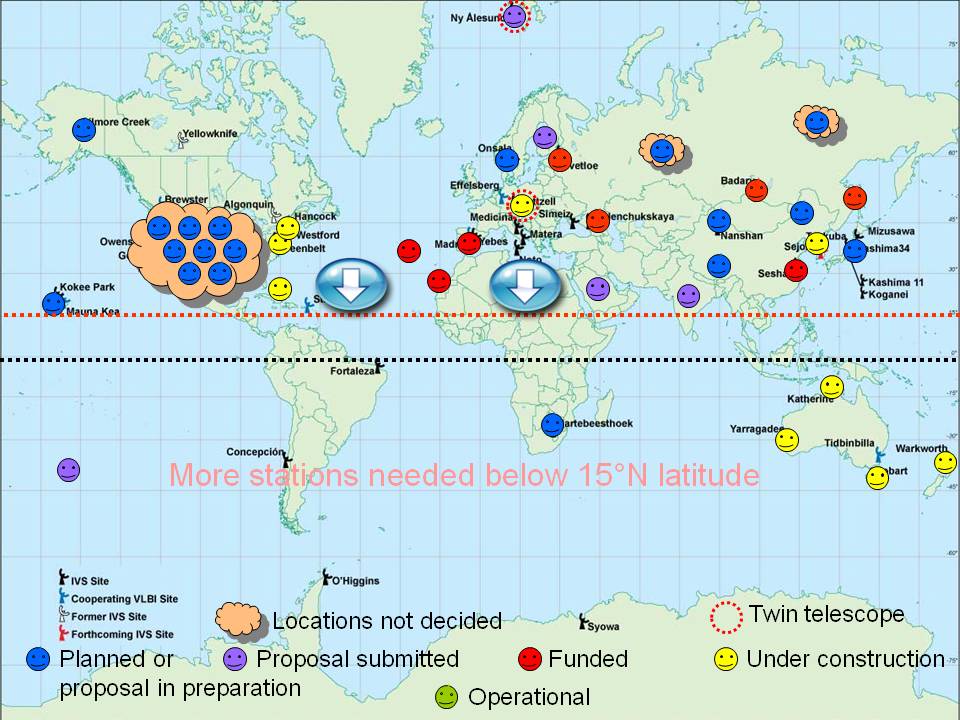IVS Technology
VGOS Network Evolution
The VGOS Technical Committee (VTC) made the following recommendations for the minimum network
of VGOS-type antennas based on extensive simulation studies:
-
Have at least three regularly observing stations on each major tectonic plate, with
more encouraged in regions where economies allow.
-
Have at least eight regularly observing stations in the southern hemisphere.
-
Have at least six regularly observing, globally distributed stations with high data
rate connection to one or more correlators to enable near-real-time EOP delivery.
-
Have at least eight larger (20 m and larger) antennas (four per hemisphere) for CRF
densification.
-
Wherever possible, co-locate new VLBI2010 stations near existing or planned space
geodesy observatories, with a priority to SLR sites.
-
Have a capability to process continuous observations for at least 24 stations, with a
long-term goal to increase the number to at least 32 stations.
The next generation VLBI network is organically growing. As of December 2010 there were
roughly 10 antennas under construction and about another 10 funded. Further around 20
new stations are either in the proposal stage or in the planning stage. The figure gives
a snapshot of the situation at the end of 2010. A deficit in the southern hemisphere
(or south of 15°N) is clearly discernible.

|